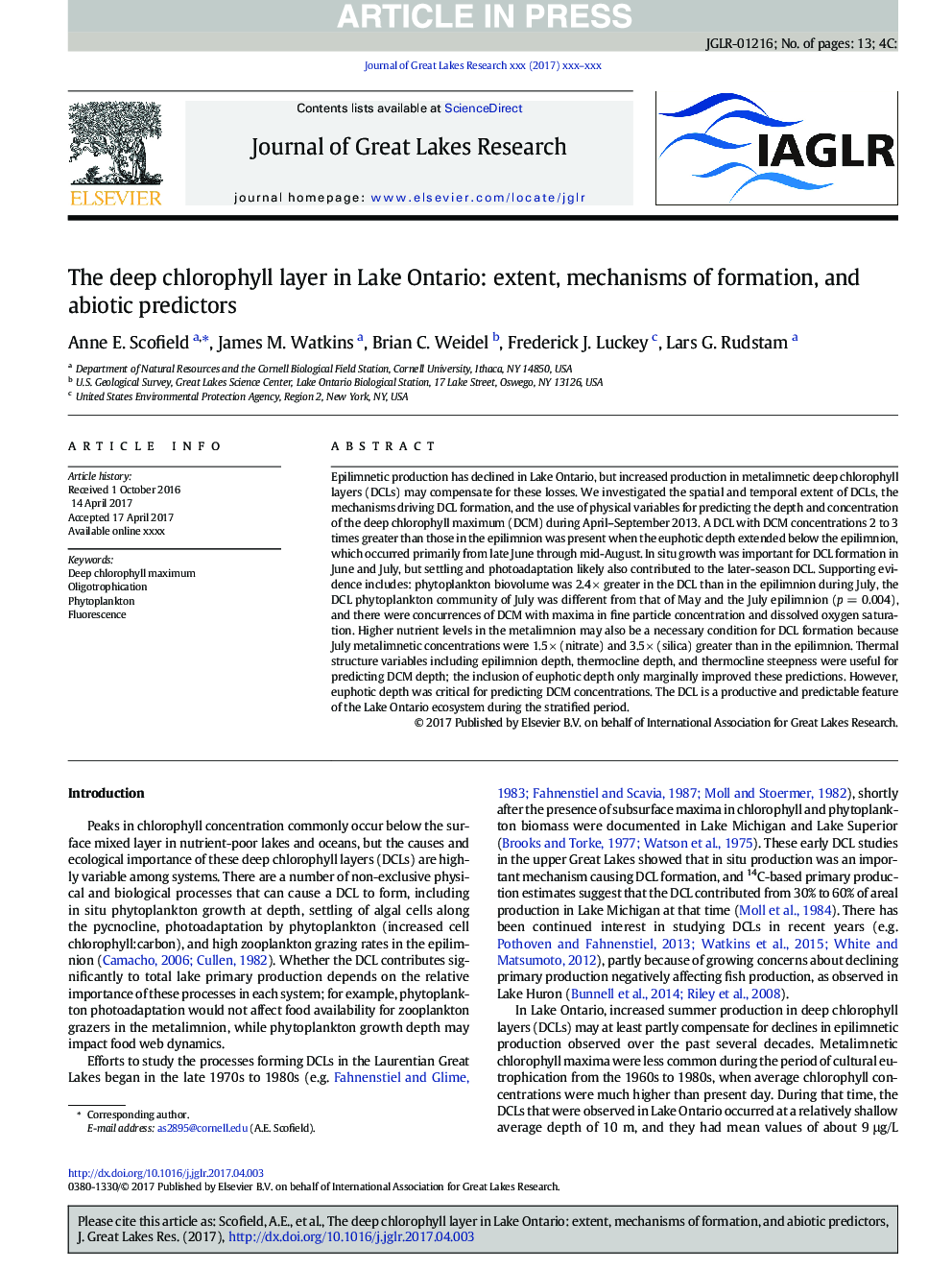| کد مقاله | کد نشریه | سال انتشار | مقاله انگلیسی | نسخه تمام متن |
|---|---|---|---|---|
| 5744590 | 1618519 | 2017 | 13 صفحه PDF | دانلود رایگان |
عنوان انگلیسی مقاله ISI
The deep chlorophyll layer in Lake Ontario: extent, mechanisms of formation, and abiotic predictors
ترجمه فارسی عنوان
لایه عمیق کلروفیل در دریاچه انتاریو: وسعت، مکانیزم های تشکیل و پیش بینی کننده های آبویوتیک
دانلود مقاله + سفارش ترجمه
دانلود مقاله ISI انگلیسی
رایگان برای ایرانیان
کلمات کلیدی
موضوعات مرتبط
مهندسی و علوم پایه
علوم زمین و سیارات
علوم زمین و سیاره ای (عمومی)
چکیده انگلیسی
Epilimnetic production has declined in Lake Ontario, but increased production in metalimnetic deep chlorophyll layers (DCLs) may compensate for these losses. We investigated the spatial and temporal extent of DCLs, the mechanisms driving DCL formation, and the use of physical variables for predicting the depth and concentration of the deep chlorophyll maximum (DCM) during April-September 2013. A DCL with DCM concentrations 2 to 3 times greater than those in the epilimnion was present when the euphotic depth extended below the epilimnion, which occurred primarily from late June through mid-August. In situ growth was important for DCL formation in June and July, but settling and photoadaptation likely also contributed to the later-season DCL. Supporting evidence includes: phytoplankton biovolume was 2.4 à greater in the DCL than in the epilimnion during July, the DCL phytoplankton community of July was different from that of May and the July epilimnion (p = 0.004), and there were concurrences of DCM with maxima in fine particle concentration and dissolved oxygen saturation. Higher nutrient levels in the metalimnion may also be a necessary condition for DCL formation because July metalimnetic concentrations were 1.5 à (nitrate) and 3.5 à (silica) greater than in the epilimnion. Thermal structure variables including epilimnion depth, thermocline depth, and thermocline steepness were useful for predicting DCM depth; the inclusion of euphotic depth only marginally improved these predictions. However, euphotic depth was critical for predicting DCM concentrations. The DCL is a productive and predictable feature of the Lake Ontario ecosystem during the stratified period.
ناشر
Database: Elsevier - ScienceDirect (ساینس دایرکت)
Journal: Journal of Great Lakes Research - Volume 43, Issue 5, October 2017, Pages 782-794
Journal: Journal of Great Lakes Research - Volume 43, Issue 5, October 2017, Pages 782-794
نویسندگان
Anne E. Scofield, James M. Watkins, Brian C. Weidel, Frederick J. Luckey, Lars G. Rudstam,
